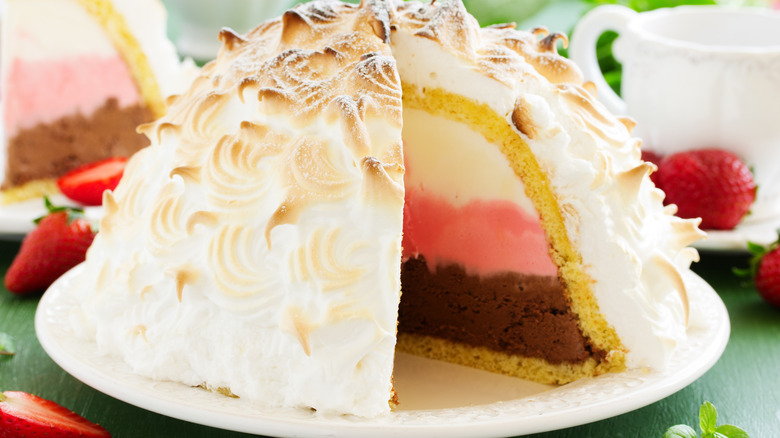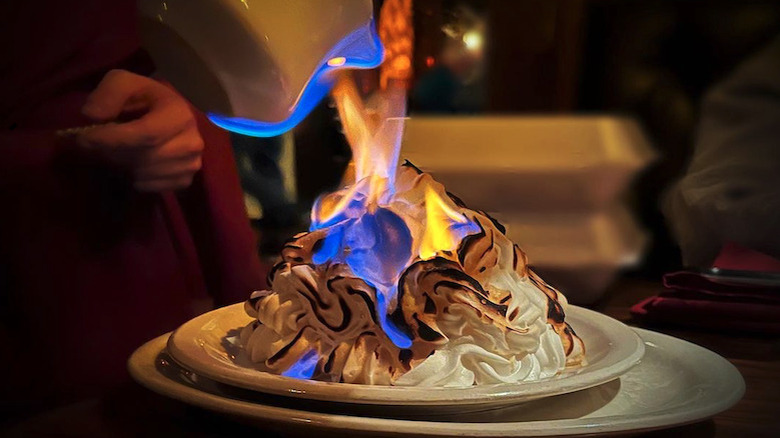The Origin Story Of The Baked Alaska
Alaska, Florida. It's not a town. It's the original name of the iconic American dessert we know as Baked Alaska. Created by Charles Ranhofer, the French chef who put New York City's famed Delmonico's on the map in the mid-19th century (via Untapped New York), the classic dessert of ice cream and cake wrapped up in a bonnet of toasted meringue was Ranhofer's nod to the U.S. purchase of the Alaska Territory in 1867.
The name works when you consider the inspiration for Ranhofer's warm-versus-cold layer cake reportedly stems from his desire to showcase the juxtaposition between the warmth of Florida and the cold of Alaska, according to Untapped New York. Still, it doesn't quite roll off the tongue. And we're not entirely sure why Florida was even in the mix. Maybe a play on the opposite corners of the United States?
It's also difficult to pinpoint when Alaska, Florida became more commonly known as Baked Alaska. We do know it was still Alaska, Florida when the first edition of Ranhofer's cookbook, The Epicurean, was published in 1893 (via Cook's Info).
One theory — which requires a suspension of belief to fully embrace the coincidence — is that at the same time Ranhofer was in New York City coming up with a dessert idea to mark the acquisition of Alaska, another chef, Antoine Alciatore of the famed Antoine's in New Orleans, was brainstorming a tribute. And they both arrived at surprisingly similar takes on ice cream, cake, and meringue (via Oven Via).
What's in a name?
We do know Ranhofer's original version of Baked Alaska (aka Alaska, Florida) featured a spice cake base topped with banana ice cream all wrapped up in a toasted meringue shell, according to Untapped New York. Or do we? Cook's Info says Ranhofer's creation featured a single-serving cake base topped with a layer of apricot jam and a cone-shaped serving of ice cream then crowned with piped meringue and browned for two minutes.
Way down yonder in New Orleans, Alciatore's take, sometimes called Bombe Alaska according to Oven Via, is a similar mound of cake, ice cream, and meringue — with one big difference. Instead of toasting the meringue, Alciatore decided to go with a flambéed presentation. The entire ice cream sculpture is drenched with liquor, usually rum, and set afire tableside right before it's served.
Similar creations, but at Antoine's, Alciatore went with a more direct approach when he named the dessert, christening it Baked Alaska. Through the decades, the name Baked Alaska prevailed, but that doesn't mean Alciatore's version won out. Today, as shown by Brit + Co, Baked Alaska has become a generic term for myriad combinations of ice cream, cake, and meringue served toasted or, for a more dramatic presentation, flambéed.

